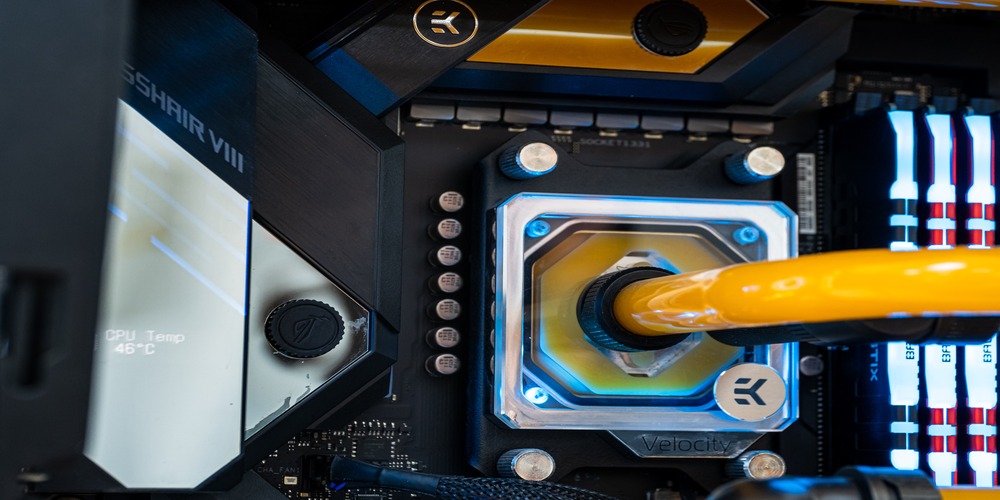Liquid cooling is becoming an increasingly popular method to regulate the temperature of various machinery, including those used in the manufacturing industry. Water is circulated through a specially designed system to absorb and dissipate heat efficiently.
This cooling method is particularly useful for applications requiring high processing power and generating significant heat.
In this article, we will explore the fundamentals of water liquid cooling and provide a beginner’s guide to help you understand its benefits and how it can be applied to keep your machinery operating optimally. So, let’s dive in and explore the world of water liquid cooling.
Components Required for Water Liquid Cooling System
Several components are required to ensure efficient and effective cooling when setting up a water liquid cooling system. These components include a water cooling plate along with a radiator, a pump, tubing, fittings, and a coolant.
The water block transfers heat from the component to the water. The radiator dissipates the heat into the air using fans. The pump circulates the coolant through the system while the tubing connects all the components.
Fittings secure the tubing in place and ensure a tight seal, preventing leaks. Lastly, the water cooling plate is customized with channels to distribute water effectively and remove heat from a component.
How Water Liquid Cooling Works
Water liquid cooling works by transferring heat away from the source through the use of water. The water is pumped through a series of channels or tubes in a water cooling plate or block in direct contact with the heat source.
As the water flows through the channels, it absorbs the heat generated by the source and then carries it away from the system.
The heated water is circulated through a radiator, dissipating heat to the surrounding air. The cooled water is then returned to the water cooling plate to repeat the cycle. This process enables the efficient cooling of components and prevents overheating.
Types of Water Liquid Cooling Systems
When it comes to water liquid cooling systems, there are mainly two types: open-loop and closed-loop. Both types have unique features and benefits, which can be adapted to various cooling needs.
Open-Loop Cooling System
An open-loop cooling system, also known as a single-pass system, pumps water from a storage tank through the water cooling plate, and then the heated water is discharged out of the system.
This type of system is commonly used for large-scale industrial processes that require continuous water cooling, such as in power plants and chemical factories.
Closed-Loop Cooling System
A closed-loop cooling system, also known as a recirculating system, is a self-contained unit that continuously circulates water through the cooling plate and back to the chiller for re-cooling.
This type of system is commonly used in computer systems and smaller industrial equipment that requires precision cooling, as it maintains a consistent temperature within a closed circuit.
Conclusion
Ultimately, water liquid cooling systems are essential for the efficient and reliable performance of various machines, including CNC machines. They offer several advantages over traditional air cooling systems, such as better heat dissipation and quieter operation.
Choosing the right system for your needs requires careful consideration of various factors, such as budget, maintenance requirements, and the specific cooling needs of your machine.
